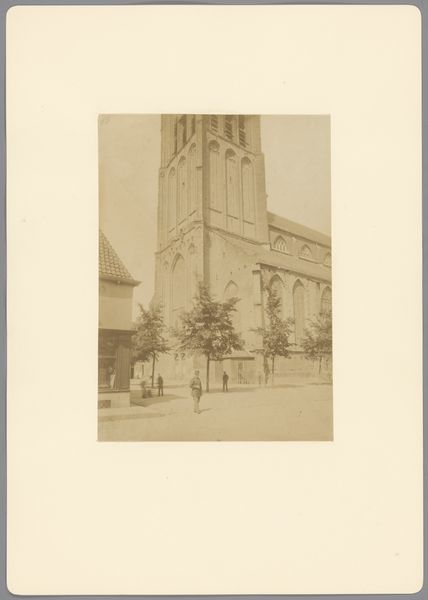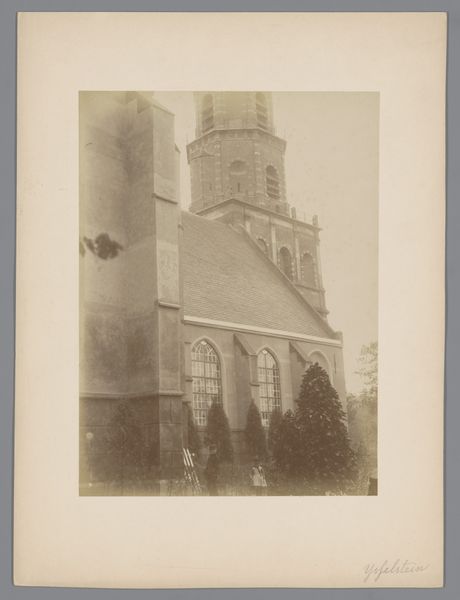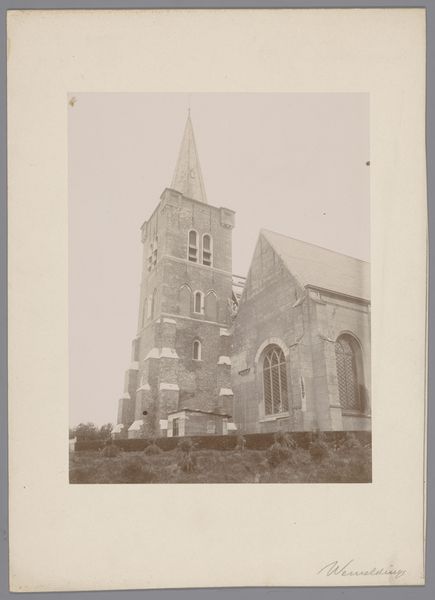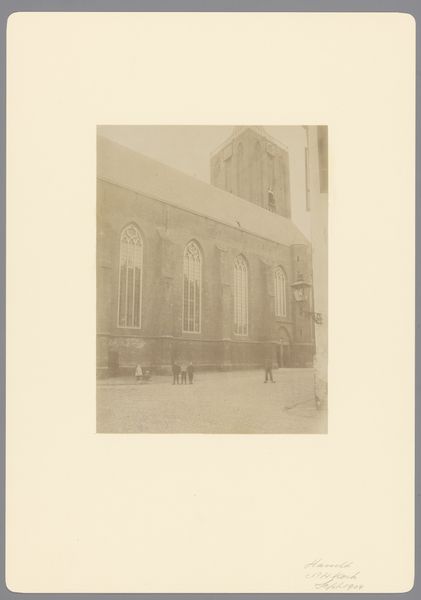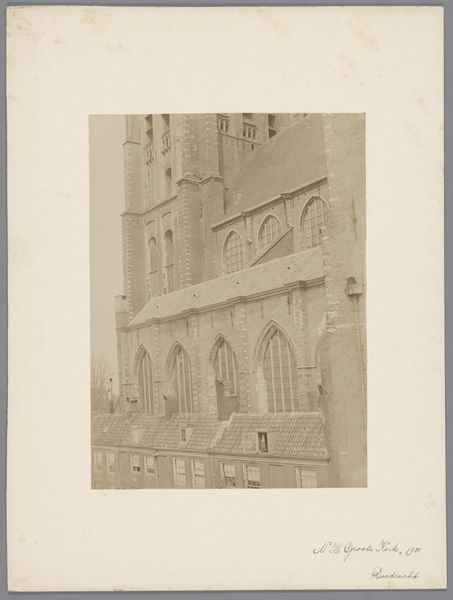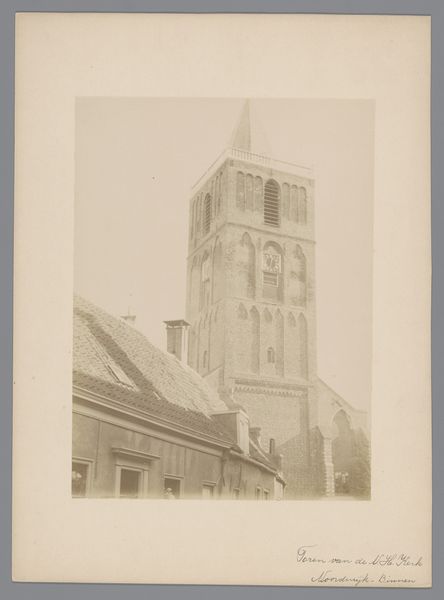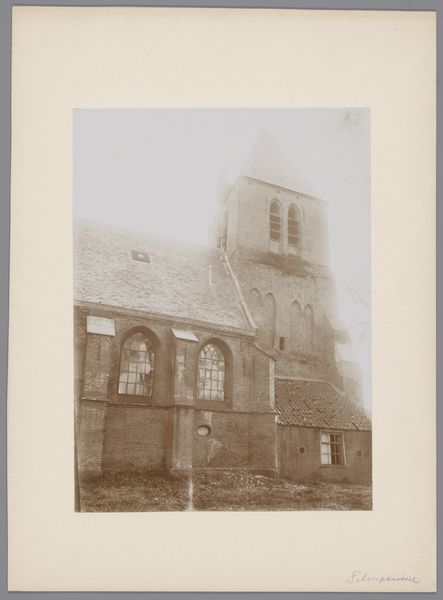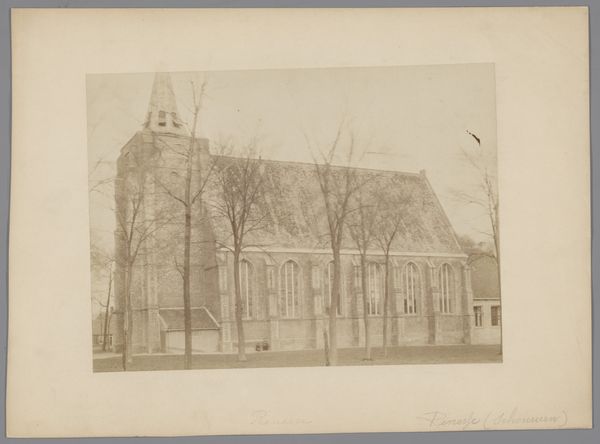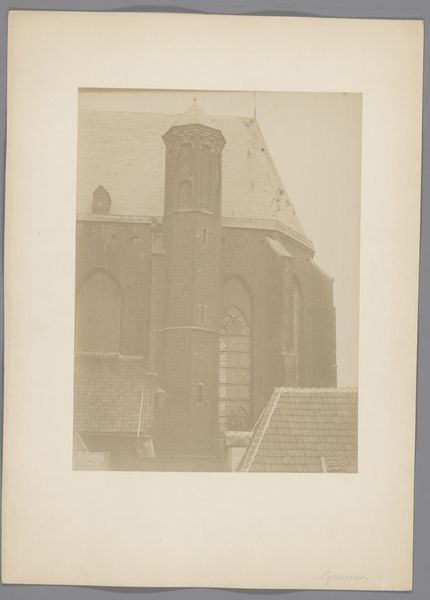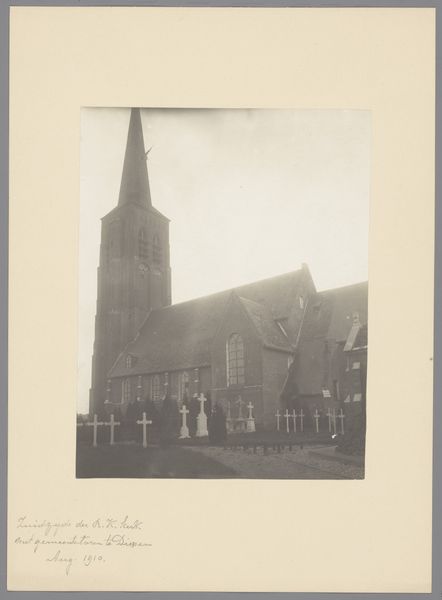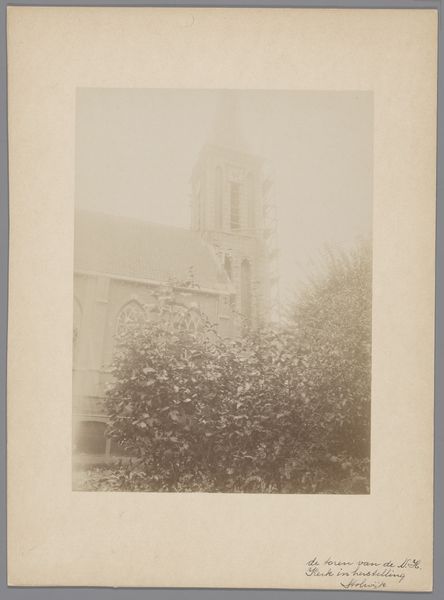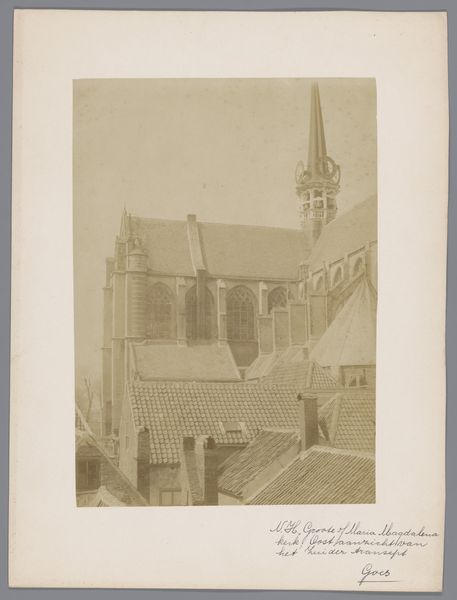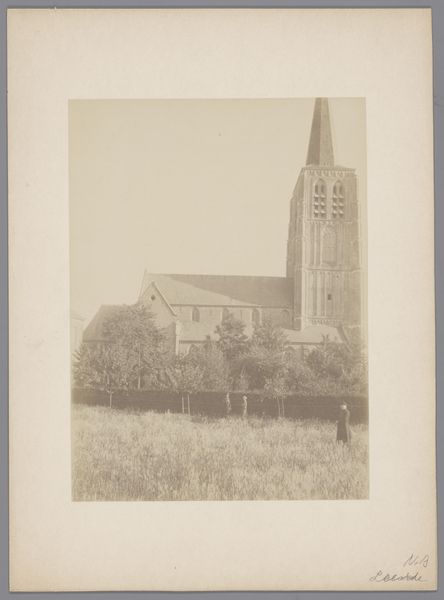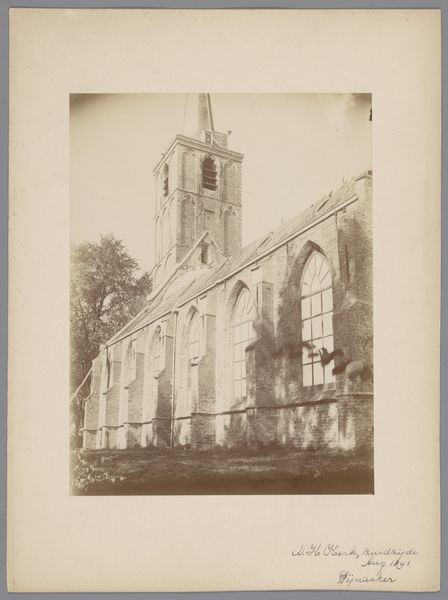
Dimensions: height 229 mm, width 169 mm
Copyright: Rijks Museum: Open Domain
Curator: Here we have an anonymous photograph from 1902, titled "Grote of Sint-Nicolaaskerk te Monnickendam," depicting the grand church of St. Nicholas in Monnickendam. Editor: It’s certainly imposing. I'm struck by the solemnity; it feels monumental and stark against what I imagine to be the muted sky of the Netherlands. The gray scale only amplifies the feeling. Curator: Note how the photographer has chosen the angle. We have a three-quarter view, which allows the eye to travel along the body of the church and appreciate its linear dimension before rising to the great spire. Editor: The architecture, while seemingly stoic in its design, brings forth all sorts of interesting tensions that mirror my own struggles for inclusion in this community. Who had access? What were the conditions? Where were the people allowed, and not allowed? Curator: That’s interesting. Looking at the photograph as an object, one sees the hand of time has touched it physically; there's a subtle fading around the edges, almost like a halo. It calls to mind similar photographs taken at the beginning of architectural preservation movements. Editor: Precisely. And consider, this building wasn’t neutral. These imposing structures legitimized and facilitated religious—and, consequently, social—oppression. Who was centered? Whose values dictated that center? Who did it exclude? Curator: The geometry of the windows against the mass of brick has a very pleasing sense of visual balance. Even in the slightly softened focus, the building is grounded in concrete design, an aesthetic experience if nothing else. Editor: A stark contrast that does capture a pivotal moment, really, even as the artist chose to memorialize the architecture rather than the real and imagined societal cost for said structure. Curator: In essence, whether we look at it aesthetically or through the lens of cultural impact, this image of St. Nicholas’ church prompts a dialogue about space, faith, and representation. Editor: Leaving us to contend with the legacies and structures that still impact communities and spaces today.
Comments
No comments
Be the first to comment and join the conversation on the ultimate creative platform.
